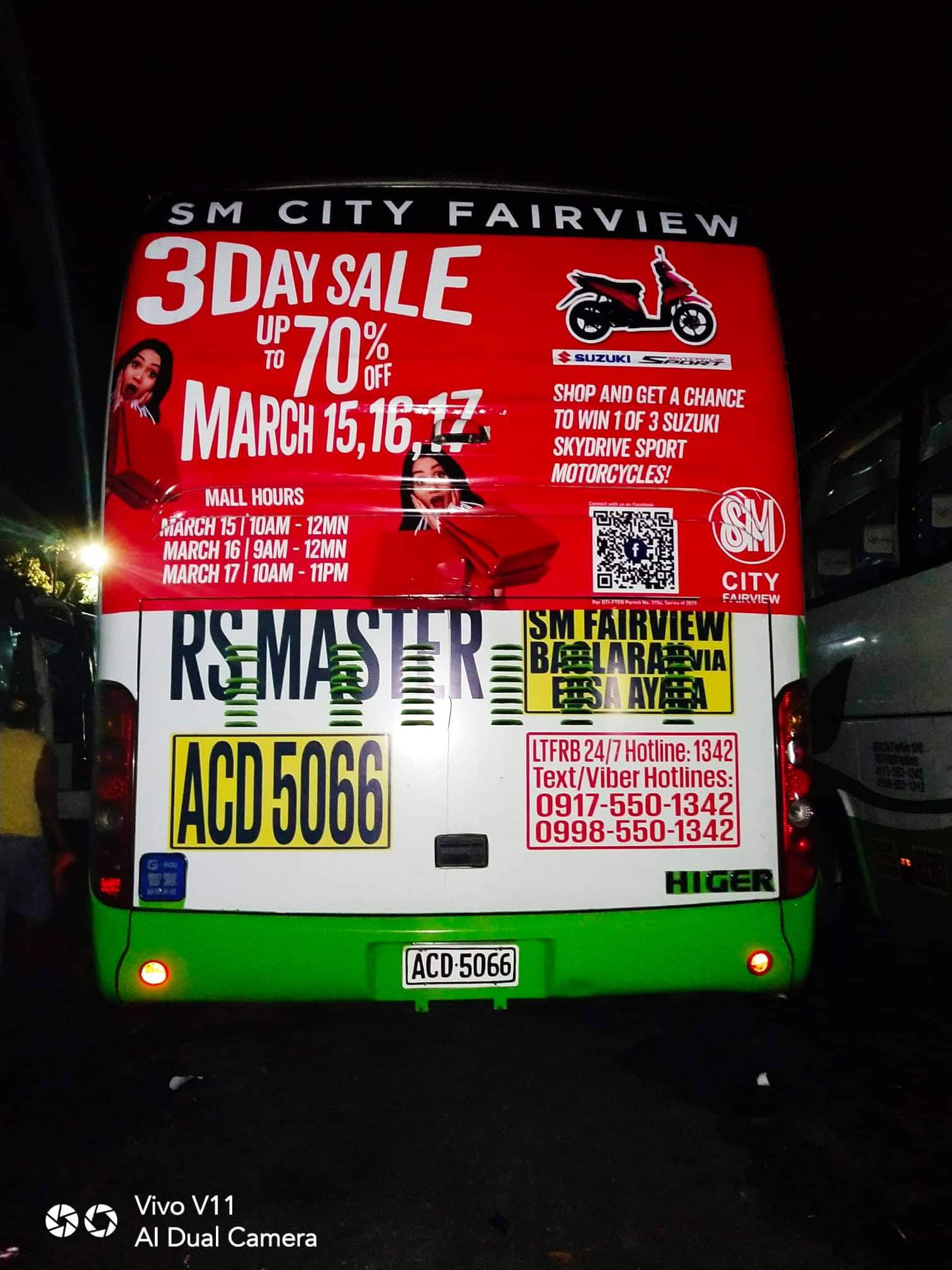Affordable Transit Advertising Philippines for Brand Recognition
Wiki Article
Recognizing the Role of Transportation Marketing in Enhancing Brand Name Presence and Consumer Interaction
Transportation advertising has become an essential element in the marketing landscape, using unique possibilities for brand names to raise their presence and engage consumers effectively. With the capability to reach a varied and restricted target market during their daily commutes, these advertising and marketing approaches are not merely regarding visibility; they are regarding developing significant links with possible consumers. As we explore the diverse benefits and cutting-edge methods within transit advertising, it becomes necessary to take into consideration exactly how these components collectively affect consumer perception and behavior, questioning about their long-term influence on brand name commitment.Interpretation of Transit Advertising And Marketing
Transportation advertising and marketing describes the method of advertising products, solutions, or brand names via advertisements put in and around public transportation systems. This type of marketing incorporates a selection of positionings, consisting of posters on trains and buses, digital displays at transportation stations, and wraps on the outside of cars. It intends to reach a varied target market, maximizing the high foot website traffic connected with public transportation.Transportation marketing is purposefully positioned to capture the interest of travelers, that commonly invest significant time taking a trip or waiting. By integrating ads right into the day-to-day routines of individuals, brand names can develop a lasting impression and foster brand acknowledgment. The tool is especially efficient in urban environments, where public transport is a main mode of travel.
In addition, transportation advertising and marketing can facilitate localized targeting, allowing organizations to get to particular demographics based upon transit paths and terminal places. As urban populaces expand and making use of public transportation increases, this marketing technique has actually acquired importance as a vital element of integrated advertising and marketing techniques. The dynamic nature of transit advertising and marketing, integrated with its capability to engage consumers in a captive setting, underscores its significance in modern advertising techniques.
Advantages of Transit Advertising
The performance of transit advertising and marketing depends on its capability to deliver a multitude of advantages to brands looking for to boost presence and interaction. One of the main benefits is the extensive reach it provides; transit ads can successfully target varied demographics throughout urban areas, reaching both commuters and pedestrians alike. This broad direct exposure considerably boosts brand understanding.An additional advantage is the high frequency of perceptions. As transit cars take a trip along recognized routes and quit at multiple areas, they develop repeated direct exposure that strengthens brand name messages. This regularity promotes experience, which is essential in consumer decision-making.
Transit marketing is likewise affordable compared to other media platforms. Given its large reach and capacity for high perceptions, brands frequently experience a lower cost per thousand perceptions (CPM), maximizing their marketing budget plan.
Moreover, transit advertisements can produce a feeling of area link. By lining up with neighborhood transportation systems, brand names can reverberate with regional audiences and promote a feeling of regional satisfaction. This localized strategy improves brand name loyalty and interaction, making transportation marketing an engaging choice for organizations intending to solidify their existence in the marketplace.

Efficient Approaches for Transportation Campaigns
To make the most of the influence of transit campaigns, brands ought to leverage strategic planning and execution customized to site here their target market. First, recognizing the market features of the target market making use of public transit is important. This allows brands to create tailored messaging that reverberates with potential customers.Following, selecting the best transportation mediums is vital. Whether using bus wraps, subway posters, or digital screens, each medium has distinct advantages that can boost visibility. For circumstances, dynamic visuals on bus wraps can stand out, while digital ads can be updated regularly to mirror prompt promos.
In addition, integrating a natural branding technique across transit platforms ensures uniformity and strengthens the brand name's identification. Making use of attractive layouts and unforgettable taglines will certainly strengthen brand name More Help recall amongst travelers.
By using these approaches, brand names can successfully harness the potential of transit advertising, fostering better recognition and connection with their target audience. Eventually, a well-executed transportation project can drive considerable growth in brand name visibility and customer involvement.

Gauging Influence and Engagement
In examining the performance of transportation advertising campaigns, precise dimension of effect and interaction is necessary for brands looking for to optimize their advertising and marketing techniques. Metrics such as reach, frequency, and perceptions provide fundamental information to assess presence. Examining these factors helps figure out the amount of prospective clients are exposed to the ads throughout their day-to-day commutes.Engagement can be more gauged with consumer interactions, such as website traffic, social media you can look here sites points out, and straight responses to calls-to-action included in the ads. Utilizing devices like QR codes or unique Links can facilitate monitoring of consumer behavior directly linked to transportation campaigns. Surveys and feedback systems additionally serve as valuable methods to gather qualitative data on consumer understandings and recall of the advertisement.
Moreover, progressed analytics and acknowledgment designs can associate transportation direct exposure with subsequent acquiring behavior, using understandings into the return on financial investment. By using a comprehensive approach that combines quantitative and qualitative measures, brand names can develop a nuanced understanding of their transit marketing impact. Ultimately, this data-driven strategy enables brand names to refine their campaigns, guaranteeing they reverberate properly with target audiences and improve general brand name presence.
Study of Successful Campaigns
Effective transit ad campaign function as compelling instances of exactly how reliable methods can boost brand presence and engagement. Transit Advertising Philippines. One noteworthy case is the "I Love New York" project, which transformed the city's image and drew in millions of visitors. By utilizing metro ads, signboards, and bus wraps, the project produced a solid, cohesive brand identity, leading to a significant uptick in tourism and regional organization patronage
An additional exemplary campaign is Coca-Cola's "Share a Coke" campaign, which leveraged transportation advertising to customize the brand experience. By including preferred names on promotional products across various transportation platforms, Coca-Cola fostered a much deeper psychological connection with customers, motivating them to share their experiences on social networks.
In addition, the "Got Milk?" campaign effectively utilized public transport ads to get to a broad target market, reinforcing the message of the value of milk in a balanced diet plan. The project saw a measurable increase in milk consumption in target demographics.
These study highlight that when performed attentively, transit marketing can dramatically improve brand exposure, foster consumer interaction, and drive quantifiable results, demonstrating its important role in modern advertising and marketing approaches. - Transit Advertising Philippines
Conclusion
In verdict, transit advertising offers as an important tool for enhancing brand visibility and fostering customer engagement. Eventually, the capability to measure interaction and analyze successful instance studies highlights the performance of transit marketing in driving brand loyalty and consumer communications.Transit marketing has emerged as a pivotal aspect in the advertising landscape, offering unique chances for brands to raise their exposure and involve customers successfully.Furthermore, transit advertising and marketing can promote local targeting, allowing businesses to reach details demographics based on transportation paths and station locations.In evaluating the efficiency of transportation advertising campaigns, precise dimension of influence and engagement is crucial for brand names seeking to maximize their advertising techniques.Successful transit advertising projects serve as compelling instances of just how effective strategies can boost brand name exposure and engagement.In final thought, transit advertising and marketing serves as an important device for boosting brand visibility and cultivating consumer interaction.
Report this wiki page